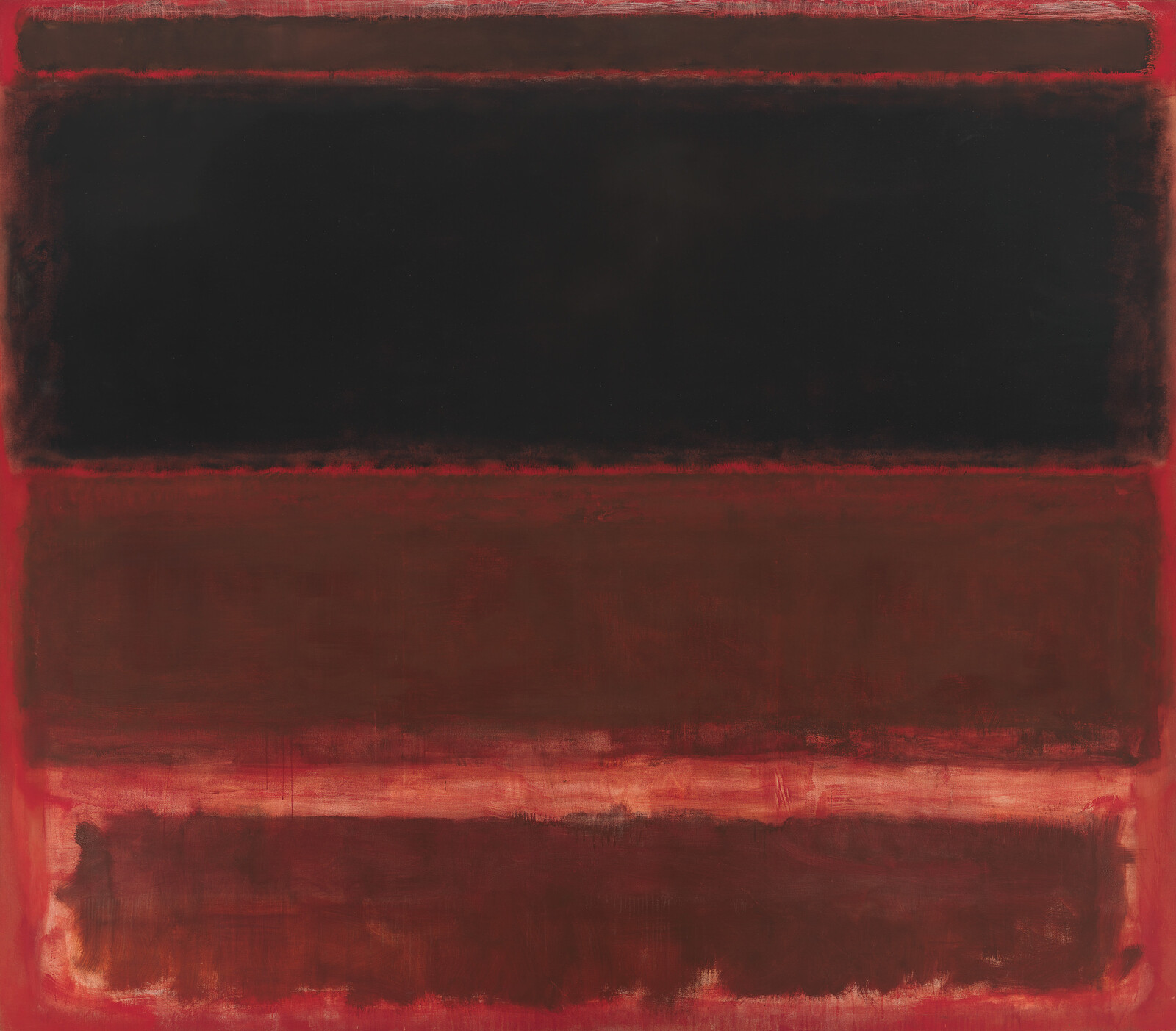The Promise was one of Newman’s earliest “zip” paintings. Begun in 1949, these works were radically abstract, with subtly inflected monochromatic backgrounds partitioned by narrow vertical bands—or zips, as the artist called them—of contrasting colors. To make The Promise, Newman laid down two strips of masking tape to demarcate the zips, and painted the ground black. He then removed the tape and painted the blue-gray stripe at the right with a palette knife, producing a textured and irregular effect. When the black paint was dry, he filled in the stripe at the left, taping off the edges to create a precisely defined zip in off-white. The juxtaposition of the two zips causes visual tension, activating the surface of the canvas. Newman believed strongly in the power of abstraction to communicate the most dramatic and elemental aspects of human existence—the sense of alienation and vulnerability that followed in the wake of World War II, as well as an abiding faith in creation and new beginnings, as suggested by the title and composition of The Promise.







